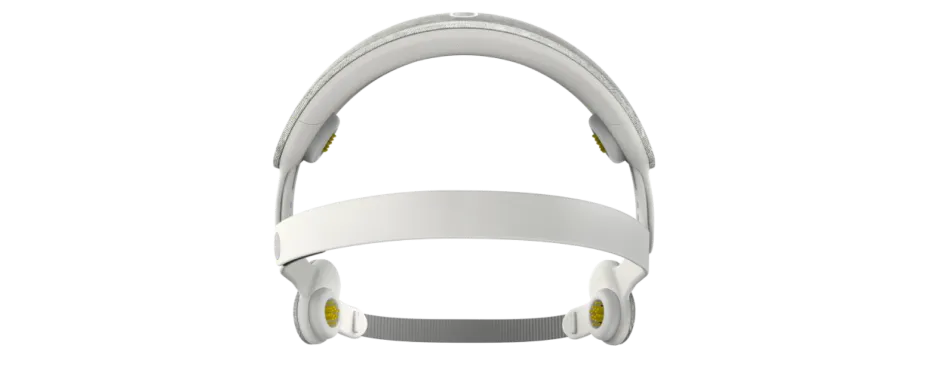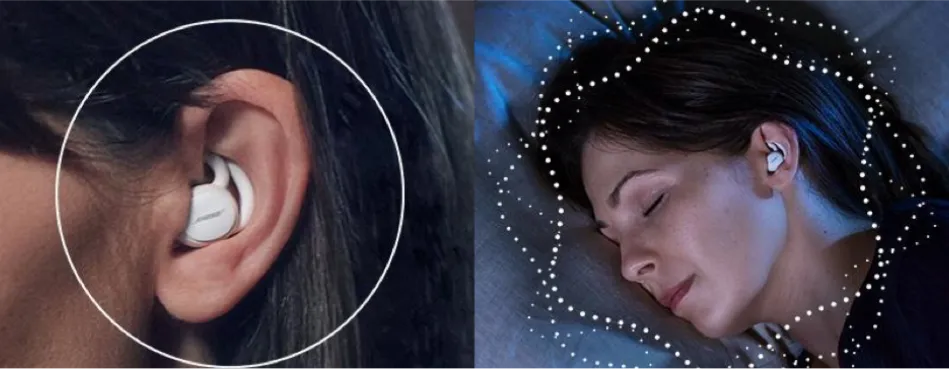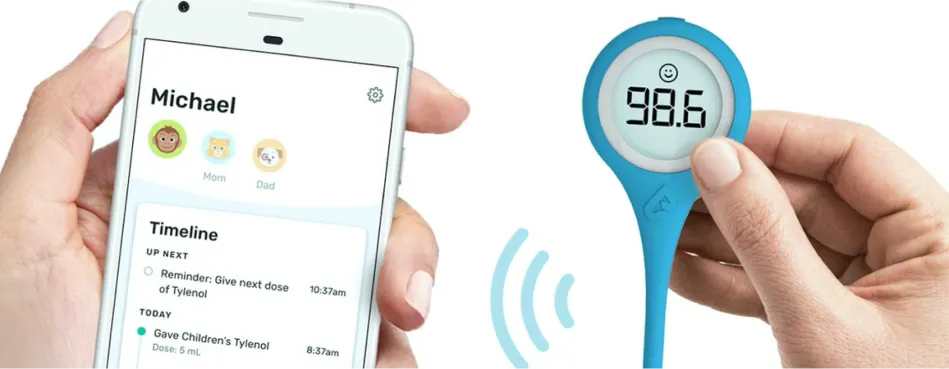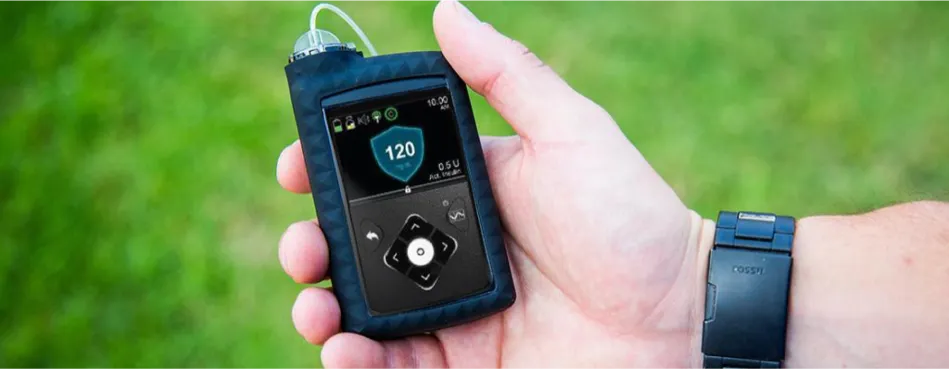
The significance of product design in the ever-evolving healthcare field cannot be overstated. As we navigate through an era marked by rapid technological advancements and increasing patient expectations, the need for innovative strategies in healthcare product design has never been more critical. This blog post delves into the transformative power of well-conceived product design in healthcare, exploring how it can enhance patient care, streamline healthcare processes, and ultimately improve health outcomes.
Healthcare product design is a multifaceted discipline that goes beyond mere aesthetics. It encompasses creating functional, user-friendly, and effective medical devices, health monitoring systems, and wellness products. At its core, healthcare product design is about solving real-world problems, addressing user needs, and ensuring that products can seamlessly integrate into the lives of patients and healthcare providers.

One of the fundamental shifts in healthcare product design is the move from a reactive, illness-focused approach to a proactive, wellness-oriented paradigm. Traditionally, healthcare products were designed with the primary goal of diagnosing and treating diseases. However, with the growing emphasis on preventive care and holistic well-being, a rising demand exists for products supporting health maintenance and enhancement in everyday life. This shift necessitates innovative design strategies prioritizing user experience, accessibility, and adaptability.
User-centered design (UCD) is a pivotal strategy in healthcare product development. This approach focuses on understanding the end-users’ needs, preferences, and limitations—patients, caregivers, and healthcare professionals. Companies can create intuitive, effective, and enjoyable products by involving users in design. This enhances the products’ usability and fosters empathy, ensuring the designs resonate with users’ emotional and psychological needs.
Integrating advanced technologies such as artificial intelligence (AI), the Internet of Things (IoT), and big data analytics is revolutionizing healthcare product design. These technologies enable the creation of smart devices that offer personalized health insights, remote monitoring, and predictive analytics. However, integrating technology into healthcare product design presents unique challenges. Designers must ensure these products are secure, reliable, and compliant with regulatory standards while considering the ethical implications of AI and big data.
A key goal of modern healthcare product design is to empower patients to take an active role in their health management. Products that facilitate self-monitoring, provide educational resources, and encourage healthy behaviors can significantly enhance patient engagement and adherence to treatment plans. Moreover, these products should be inclusive, catering to users with diverse abilities and backgrounds, ensuring that healthcare is accessible to all.
While much of the focus in healthcare product design is on patients, it is equally important to consider the needs of healthcare providers. Medical professionals rely on various tools and devices in their daily practice, and the design of these products can significantly affect their efficiency, accuracy, and job satisfaction. Ergonomic design and user-friendly interfaces in medical software can streamline administrative tasks, allowing healthcare providers to focus more on patient care.
In conclusion, innovative strategies in healthcare product design hold immense potential to transform patient care. By embracing user-centered design, integrating advanced technologies, and focusing on patient engagement and empowerment, healthcare companies can create products that genuinely make a difference. As we navigate the complexities of the modern healthcare landscape, thoughtful and innovative design will be the cornerstone of influential and impactful healthcare solutions.
This introduction sets the stage for a comprehensive exploration of innovative strategies in healthcare product design, highlighting key themes and the importance of user-centered, technology-integrated, and empowering design approaches.
In the modern healthcare landscape, the significance of product design has become increasingly evident. As the industry continues to evolve, the need for well-designed healthcare products that are functional, user-friendly, and effective has never been more critical. Product design in healthcare extends beyond aesthetics; it involves creating solutions that address real-world problems, enhance patient care, and improve the overall healthcare experience. This article explores the multifaceted importance of product design in healthcare, emphasizing its role in patient safety, user experience, accessibility, and innovation.
Accessibility is another critical aspect of healthcare product design. Healthcare products should be inclusive, catering to users with diverse abilities and backgrounds. This means considering factors such as age, disability, language, and socioeconomic status in the design process.

For instance, medical devices should be designed to be accessible for individuals with limited skills, such as those with arthritis. This might involve creating larger buttons, more evident labels, and ergonomic designs that reduce strain. Similarly, digital health platforms should be available in multiple languages and accessible to individuals with visual or hearing impairments.
Inclusivity in healthcare product design also means considering affordability. Designing cost-effective products can make healthcare more accessible to a broader range of patients, particularly those in low-income communities. By promoting accessibility and inclusivity, healthcare product design can contribute to health equity and ensure that everyone can benefit from advancements in healthcare technology.
Innovation is at the heart of healthcare product design. As the healthcare industry faces new challenges and opportunities, innovative design solutions are essential to keep pace with these changes and improve patient care.

Integrating advanced technologies such as artificial intelligence (AI), the Internet of Things (IoT), and big data analytics drives significant advancements in healthcare product design. These technologies enable the creation of smart devices that offer personalized health insights, remote monitoring, and predictive analytics.
For example, AI-powered diagnostic tools can analyze medical images with remarkable accuracy, assisting doctors in the early detection of diseases. IoT-enabled devices can continuously monitor vital signs and send alerts in case of anomalies, ensuring timely intervention. Big data analytics can provide valuable insights into patient health trends and treatment outcomes, informing better decision-making.
Healthcare is one of the most regulated industries, with stringent standards and requirements to ensure patient safety and product efficacy. Product design in healthcare must account for these regulatory requirements and ensure compliance with standards set by bodies such as the Food and Drug Administration (FDA) in the United States and the European Medicines Agency (EMA) in Europe.

Compliance with regulatory standards involves rigorous testing, documentation, and quality assurance processes. Healthcare products must be designed to meet these requirements without compromising usability or performance. By ensuring regulatory compliance, healthcare product design not only protects patient safety but also enhances the credibility and
While much of the focus in healthcare product design is on patients, it is equally important to consider the needs of healthcare providers. Medical professionals rely on various tools and devices in their daily practice, and the design of these products can significantly affect their efficiency, accuracy, and job satisfaction.
Ergonomic design is crucial in this context. Medical devices that are comfortable to use, reduce physical strain, and minimize the risk of errors can significantly improve healthcare providers’ workflows. For instance, surgical instruments designed with ergonomic handles can reduce hand fatigue and enhance precision during procedures.
Additionally, integrating user-friendly interfaces in medical software can streamline administrative tasks, allowing healthcare providers to focus more on patient care. With intuitive design, electronic health record (EHR) systems can improve data entry accuracy, reduce time spent on documentation, and facilitate better communication among healthcare teams.
Understanding the importance of product design in healthcare is crucial for developing solutions that truly make a difference in patient care. By focusing on patient safety, enhancing user experience, promoting accessibility and inclusivity, driving innovation, facilitating compliance, and supporting healthcare providers, healthcare product design can transform the healthcare landscape. As the industry continues to evolve, integrating thoughtful and innovative design will be vital in addressing the complex challenges and opportunities in healthcare, ultimately improving health outcomes and enhancing the quality of life for patients worldwide.
Effective product design is paramount in healthcare to ensure that medical devices and solutions meet clinical needs and enhance the user experience for patients and healthcare professionals. As the healthcare landscape evolves with technological advancements and shifting patient expectations, certain fundamental product design principles have emerged as critical for success. This article delves into these basic principles, highlighting their importance in creating healthcare products that are safe, effective, and user-friendly.
User-centered design (UCD) is a cornerstone of effective healthcare product design. This approach centers the end-users—patients, caregivers, and healthcare professionals—at the center of the design process. Designers can create intuitive, efficient, and satisfying products by understanding their needs, preferences, and limitations.
Critical aspects of user-centered design include:
Engagement with Users: Involving users in the design process through interviews, surveys, and usability testing ensures that the final product addresses real-world challenges and fits seamlessly into users’ lives.
Empathy: Designers must empathize with users to understand their emotional and psychological needs. This helps them create products that not only function well but also resonate with them on a personal level.
Iterative Testing: Regularly testing prototypes with actual users allows for continuous feedback and improvements, leading to a product that is well-refined and user-approved by launch.
Safety is paramount in healthcare. Medical devices and products must be designed to minimize the risk of errors and adverse events. This involves rigorous testing and adherence to regulatory standards to ensure the product’s safety and reliability.
Critical aspects of ensuring safety and reliability include:
Compliance with Regulations: Adhering to standards set by regulatory bodies such as the Food and Drug Administration (FDA) and the European Medicines Agency (EMA) ensures that products meet the necessary safety and efficacy criteria.
Fail-Safe Mechanisms: Incorporating features that prevent misuse or accidental harm, such as alarms for incorrect usage or automatic shut-off systems, enhances the product’s safety.
Durability and Reliability: Designing products that can withstand the rigors of healthcare environments and maintain their functionality over time is essential for ensuring consistent performance.
Ergonomics is the science of designing products that fit the human body and its movements. In healthcare, ergonomic design ensures that products are comfortable to use, reduce physical strain, and minimize the risk of errors.
Critical aspects of ergonomics and usability include:
While functionality and safety are critical, healthcare products’ aesthetic appeal should also be noticed. Attractive design can enhance user engagement and satisfaction and reduce the anxiety and discomfort associated with medical procedures and environments.
Critical aspects of aesthetics and design appeal include:
Integrating advanced technologies such as artificial intelligence (AI), the Internet of Things (IoT), and big data analytics is revolutionizing healthcare product design. These technologies enable the creation of smart devices that offer personalized health insights, remote monitoring, and predictive analytics.
Critical aspects of integrating advanced technologies include:
As awareness of environmental issues grows, sustainability has become essential in healthcare product design. Designing eco-friendly products can reduce healthcare’s ecological impact and contribute to global sustainability efforts.
Key aspects of sustainability and environmental impact include:
Healthcare products must be affordable to ensure they are accessible to a broad range of patients and healthcare providers. Cost-effective design can reduce the overall cost of healthcare and improve access to essential medical devices and solutions.
Critical aspects of cost-effectiveness and affordability include:
Effective healthcare product design is a complex and multifaceted process that requires a deep understanding of user needs, regulatory requirements, and technological advancements. By adhering to fundamental principles such as user-centered design, safety and reliability, ergonomics and usability, aesthetics and design appeal, integration of advanced technologies, sustainability, and cost-effectiveness, designers can create healthcare products that genuinely make a difference. As the healthcare landscape evolves, these principles will remain essential for developing innovative solutions that enhance patient care and improve health outcomes. This comprehensive piece outlines the critical principles of effective healthcare product design, providing a detailed understanding of what it takes to create successful healthcare products.
The importance of innovative and effective product design cannot be overstated in the dynamic and rapidly evolving healthcare field. Well-designed healthcare products not only enhance patient care but also improve the efficiency and satisfaction of healthcare providers. This article explores several case studies of successful healthcare product designs, illustrating the impact of thoughtful design on patient outcomes and healthcare delivery.

The Urgonight EEG Band is a wearable device developed by URGO Group, a leading French international healthcare company specializing in self-care and advanced wound care products. This innovative product is designed to improve sleep quality through neurofeedback training.
The design process for the Urgonight EEG Band was deeply rooted in user-centered design principles. The development team conducted extensive research and usability testing to understand the needs and preferences of users who suffer from sleep disorders. The result was a comfortable, easy-to-use headband that users wear for 20 minutes a day, three times a week.
The Urgonight EEG Band utilizes neurofeedback technology to teach users brain-controlled exercises that enhance natural sleep. The device provides real-time feedback on brain activity, helping users develop better sleep habits. Its design prioritizes user comfort and ease of use, with a lightweight and adjustable band that fits comfortably on the head.
The Urgonight EEG Band has been well-received in the market, winning the CES 2019 Innovation Award in the wearables category. Users have reported significant improvements in their sleep quality, demonstrating the device’s effectiveness. The success of the Tonight EEG Band highlights the importance of user-centered design and innovative technology in healthcare product development.

Bose, renowned for its audio products, ventured into the healthcare market with its Sleepbuds. These buds are designed to help users sleep better by masking unwanted noises with soothing sounds.
The development of Bose Sleepbuds involved extensive research into the science of sleep and noise masking. The design team conducted numerous user tests to ensure the Sleepbuds were comfortable enough to wear throughout the night. The product design emphasizes a compact and ergonomic form factor, providing the Sleepbuds stay securely in place without causing discomfort.
Bose Sleepbuds are equipped with pre-loaded soothing sounds that help mask unwanted noises, creating a peaceful sleep environment. The accompanying mobile app allows users to customize their sleep experience by selecting sounds and setting alarms. The Sleepbuds are designed to be lightweight and feature soft, secure ear tips for maximum comfort.
Introducing Bose Sleepbuds has been a game-changer for individuals struggling with sleep disturbances due to noise. The product has received positive feedback from users who have experienced better sleep quality. Bose Sleepbuds’ success underscores the importance of leveraging a company’s core expertise—in this case, audio technology—to address healthcare challenges.

Kinsa, a health technology company, developed the Smart Thermometer to provide users with real-time health insights and personalized guidance based on their temperature readings.
The design process for the Kinsa Smart Thermometer focused on creating a product that is easy to use, accurate, and connected. The team conducted extensive user research to understand the needs of parents and caregivers, who are the thermometer’s primary users. The result was a sleek, user-friendly device that connects to a mobile app for enhanced functionality.
The Kinsa Smart Thermometer offers instant temperature readings and syncs with the Kinsa app, which provides personalized health guidance based on the user’s symptoms and temperature. The app also tracks health data over time, helping users monitor their health trends. The thermometer’s ergonomic design is suitable for all ages, making it a versatile tool for families.
The Kinsa Smart Thermometer has been praised for its accuracy and ease of use. It has become a popular choice among parents, who appreciate the peace of mind of real-time health insights and guidance. The product’s success demonstrates the value of combining digital technology with traditional healthcare tools to enhance user experience and outcomes.

Medtronic, a global leader in medical technology, developed the MiniMed 670G, a hybrid closed-loop insulin delivery system for individuals with Type 1 diabetes.
The development of the MiniMed 670G involved collaboration with patients, healthcare providers, and engineers to create a system that offers automated insulin delivery while being easy to use and reliable. The design process focused on integrating advanced algorithms with user-friendly interfaces.
The MiniMed 670G system includes a continuous glucose monitor (CGM) and an insulin pump that work together to maintain optimal glucose levels automatically. The system adjusts insulin delivery based on real-time glucose readings, reducing the burden on users to manage their insulin doses manually. The user interface is intuitive, with transparent displays and alerts informing users about their glucose levels and system status.
The MiniMed 670G has been a breakthrough in diabetes management, significantly improving the quality of life for individuals with Type 1 diabetes. Users have reported better glycemic control and reduced hypoglycemic events thanks to the automated insulin delivery system. The success of the MiniMed 670G highlights the importance of integrating advanced technology with user-centric design in medical devices.

Philips, a leading health technology company, developed Lumify, a portable ultrasound solution that provides high-quality imaging on compatible smart devices.
Lumify’s design focused on creating a portable, accessible, high-quality imaging solution for healthcare providers. The development team worked closely with clinicians to understand their needs and challenges in various healthcare settings, from emergency departments to remote clinics.
Lumify consists of a compact ultrasound transducer that connects to a smart device via USB. The accompanying app provides advanced imaging capabilities, including Doppler and color imaging. Lumify is designed to be portable and easy to use, making it suitable for a wide range of clinical applications.
Lumify has transformed point-of-care imaging by making high-quality ultrasound accessible and portable. It has been widely adopted by healthcare providers in diverse settings, from hospitals to remote and underserved areas. Lumify’s success demonstrates the potential of portable medical technology to enhance diagnostic capabilities and improve patient care.
These case studies illustrate the profound impact of innovative and effective product design in healthcare. Companies like URGO Group, Bose, Kinsa, Medtronic, and Philips have developed products that significantly improve patient outcomes and healthcare delivery by focusing on user-centered design, leveraging advanced technologies, and addressing real-world challenges. These successful healthcare product designs serve as inspiring examples of how thoughtful and innovative design can transform the healthcare landscape.
Healthcare is constantly evolving, driven by technological advancements, changing patient needs, and a continuous quest for better outcomes. Product design in healthcare plays a crucial role in addressing these dynamics, and as we look to the future, several key trends are poised to shape the landscape. This article explores the emerging trends in healthcare product design that promise to revolutionize patient care and healthcare delivery.
AI and machine learning transform healthcare product design by enabling more personalized, efficient, and predictive healthcare solutions. These technologies allow the development of smart devices that can analyze vast amounts of data to provide real-time insights and personalized recommendations.
Key Applications:
The IoT is driving a new era of connected healthcare devices that enable continuous monitoring and data sharing. These devices transform healthcare delivery by providing real-time insights and fostering a more proactive approach to patient care.
Key Applications:
The COVID-19 pandemic accelerated the adoption of telemedicine and virtual care solutions, and this trend is set to continue. These technologies enable remote consultations, reducing the need for in-person visits and making healthcare more accessible.
Key Applications:
Personalized medicine involves tailoring medical treatment to the individual characteristics of each patient. Advances in genomics, AI, and big data analytics are making it possible to develop highly personalized treatment plans.
Key Applications:
AR and VR technologies are finding increasing applications in healthcare, from medical training to patient treatment. These immersive technologies enhance the user experience and provide new ways to interact with medical data.
Key Applications:
Sustainability is becoming a critical consideration in healthcare product design. As the industry looks to reduce its environmental impact, eco-friendly materials and sustainable practices are gaining traction.
Key Applications:
Wearable technology continues to be a significant trend in healthcare. It provides patients and healthcare providers with real-time data and insights. These devices are becoming more sophisticated and offer various health monitoring capabilities.
Key Applications:
Materials science and robotics advances are leading to the development of more advanced prosthetics and exoskeletons. These devices enhance mobility and improve the quality of life for individuals with disabilities.
Key Applications:
3D printing technology is revolutionizing healthcare by enabling the creation of customized medical devices, implants, and even bio-printed tissues.
Key Applications:
The future of healthcare product design is being shaped by a convergence of advanced technologies and a focus on personalized, efficient, and sustainable solutions. These trends, from AI and IoT to AR/VR and 3D printing, drive significant innovations that promise to enhance patient care and improve healthcare delivery. As these technologies evolve, the potential for creating more effective, accessible, and eco-friendly healthcare products will only grow, transforming the industry and improving health outcomes worldwide.
This comprehensive piece covers the key future trends in healthcare product design, providing a detailed understanding of how these trends are set to revolutionize the industry.
Implementing innovative design strategies in healthcare products is essential for developing solutions that improve patient outcomes, enhance user experience, and stay ahead in a competitive market. Here are comprehensive steps and strategies to help you incorporate innovation into your healthcare product design.
User-centered design (UCD) is a methodology that prioritizes the needs, preferences, and limitations of end-users—patients, caregivers, and healthcare providers. This approach ensures that the final product is intuitive, effective, and satisfying. Steps to Implement UCD:
Integrating advanced technologies such as artificial intelligence (AI), machine learning, the Internet of Things (IoT), and big data analytics can significantly enhance the functionality and effectiveness of healthcare products. Steps to Leverage Advanced Technologies:
Ergonomic design is crucial in healthcare to ensure that products are comfortable to use and minimize the risk of errors. Usability focuses on creating products that are intuitive and easy to operate. Steps to Enhance Ergonomics and Usability:
Healthcare products must comply with stringent regulatory standards to ensure safety and efficacy. Navigating these regulations is crucial for bringing a successful product to market.
Steps to Ensure Regulatory Compliance:
Sustainability is becoming increasingly important in healthcare product design. Designing eco-friendly products can reduce environmental impact and appeal to environmentally conscious consumers.
Steps to Implement Sustainable Design:
Innovation often occurs at the intersection of different disciplines. Encouraging collaboration between designers, engineers, healthcare professionals, and patients can lead to more holistic and innovative solutions.
Steps to Foster Collaboration:
The healthcare industry is constantly evolving, and staying ahead requires a commitment to continuous learning and innovation.
Steps to Foster Continuous Learning:
Implementing innovative design strategies in healthcare products requires a multifaceted approach encompassing user-centered design, advanced technologies, ergonomics, regulatory compliance, sustainability, cross-disciplinary collaboration, and continuous learning. By embracing these strategies, healthcare companies can develop products that meet the current needs of patients and healthcare providers and anticipate and address future challenges. The result is a new generation of healthcare products that improve patient outcomes, enhance user experiences, and contribute to the overall advancement of healthcare.